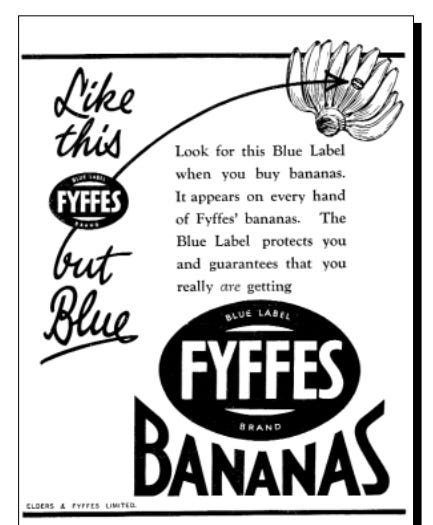What the Cannabis Industry Can Learn from Bananas
How one company single-handedly changed an entire industry by prioritizing consumer education.
Friends,
This was a big week for cannabis industry news.
You probably saw that Weedmaps is going public with a $1.5 billion valuation. (That is, unless the DOJ decides to pursue charges stemming from some sort of unresolved probe.)
Perhaps you heard that medical cannabis, not milk or blueberries, is Maine’s top crop. And by now you likely know that Sean “Jay-Z” Carter has launched his own sleek line of branded cannabis under the Monogram moniker.
Forbes reports that a 1.5-gram joint rolled by “highly trained artisans'' using a proprietary technique developed over the course of a year will set you back $50 USD. Again, that’s $50 USD for a single, even if exquisitely crafted, preroll.
Pre-rolls currently come in fourth place when it comes to sales, well behind dried flower, concentrates, and edibles. So will Jay and Monogram make moves in this most humble sector of the cannabis industry? We’ll have to wait and see.
It’s worth remembering, though, that it’s not just about attractive packaging or having a consistently high-quality product; you also have to do the work of educating the consumer on what separates your product from the rest of the field.
Consider the banana bunch. 👇🏽
They may be everyday items now, but in the 1920s fresh bananas were a relatively new product at grocery stores.
The average customer was unsure about how to eat it or cook with it. 🍌
So in July 1929, Fyffes launched the first advertising campaign for branded fruit in the world, introducing not just the company’s Blue Label but also the very idea of labeling produce.
Until then, nobody had ever thought of putting labels on individual fruits or vegetables; there was no need to.
Older branding projects had stuck to the wooden boxes in which bananas were delivered to stores from their local ripening facilities. But soon it became necessary to advertise directly to the consumer, and to distinguish varieties of produce and countries of origin by labeling the bananas themselves.
Fyffes took out ads to promote its new quality assurance system and soon became synonymous with the Blue Label, the mark of quality.
Consumers began to ask for Fyffes bananas by name. ⭐
Impossible to ignore, the Blue Label ultimately became a part of the cultural landscape. In the years to come, rival companies would introduce their own brands and labels. These producers stood on Fyffe’s shoulders. After all, the pioneer had done all the hard work of educating consumers about the finer points of good bananas.
Wholesalers and retailers used all available means to advertise their relationship, branding everything from trucks to carrier bags and store displays.
And that brings me back to cannabis.
Anyone can slap a cool label on a jar and put it on the shelves.
With some exceptions, the cannabis industry has largely been flooding the market with the cannabis equivalent of Cavendish: a tsunami of one-dimensional, high-THC hybrids that look much better than they smell or taste.
What few are doing is truly educating the consumer about what quality cannabis is or can be.
Jay-Z is gambling on Monogram’s sleek, corporate Don Draper vibe—signature strains are named “No. 88, No. 96, No. 70 and No. 01 and developed by veteran grower DeAndre ‘De’ Watson”—but it’s not clear if anyone will buy it.
Cannabis may be more complex than bananas; we’re still waiting for the Blue Label of legal cannabis to appear. 🌿
👉 If you enjoyed reading this post, feel free to share it with friends!
… For more like this, make sure to sign up here:





Interesting-- We'll see. I think labels are super important. You did lose me at "Cavendish"